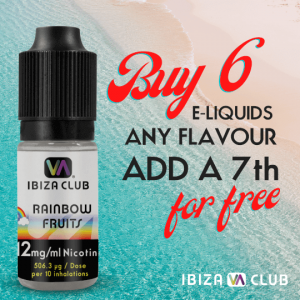NEW YEAR NEW YOU? IT’S THE PERFECT TIME TO QUIT SMOKING
Your New Years resolution might include quitting smoking but how do you choose the right beginner vape kit? Should you switch to vaping to help you quit smoking? Right now the airwaves are cluttered with information about COVID-19, new strains, new infection rates and new tiers. Somewhere in the middle of it all there’s you, and what you want to do next year to improve your health and wellbeing. If you’re a smoker COVID-19 has highlighted the need to quit but how do you do it, and more to the point, how do you stick to it?
It may feel like New Year is just a time to make promises to ourselves we never keep – it’s hard to live up to our dreams of a healthier self, especially in the middle of a global pandemic. 2020 has changed the world forever, and as we reflect on 2020 and look ahead to 2021 deciding to quit smoking may seem more daunting than ever.
Deciding to quit is the beginning, deciding to switch to vaping is going to give you the head start you need to make it stick. The NHS include vaping as a part of their stop smoking programme and their research found that you are twice as likely to succeed when you use vaping combined with behavioural support.1
Behavioural support? Sounds like you need to be in front of a human being to do that and surely that’s off the table this year? We’ve got good news for you. We created a programme called Switch to Quit, which is based on the NHS behavioural programme (without the need for in person support), helps you get started with the right beginner vape kit and helps you learn how to vape and how to stick with it.
If you’re wondering if Vaping is the right choice, here are some key facts about vaping.
Vaping is less harmful than traditional smoking.1
It’s all about the toxins. There are approximately 600 ingredients in cigarettes. When burned, cigarettes create more than 7,000 chemicals. At least 69 of these chemicals are known to cause cancer, and many are toxic.
Public Health England (PHE) found that while vaping is not entirely risk free, it is 95% less harmful than smoking, due mostly to the absence of smoke as the chemicals in e-liquids are heated, not burned.1
Here are just a few of the ingredients found in combustible tobacco products, aka cigarettes:3
- Acetone—found in nail polish remover
- Acetic acid—an ingredient in hair dye
- Ammonia—a common household cleaner
- Arsenic—used in rat poison
- Benzene—found in rubber cement and gasoline
- Butane—used in lighter fluid
- Cadmium—active component in battery acid
- Carbon monoxide—released in car exhaust fumes
- Formaldehyde—embalming fluid
- Hexamine—found in barbecue lighter fluid
- Lead—used in batteries
- Naphthalene—an ingredient in mothballs
- Methanol—a main component in rocket fuel
- Tar—material for paving roads
- Toluene—used to manufacture paint
Many smokers incorrectly believe that it is the Nicotine that causes the health issues, but this is a myth.4 In fact, it is the tobacco, or more specifically, it’s the burning of tobacco and the related toxins released into the body and environment via the smoke.
Not only is smoking traditional cigarettes disastrous for your health, it has a serious impact on those around you. Secondary smoking related illnesses are common and, like smoking related illnesses, are preventable.2
Vaping can help you quit.
Public Health England (PHE) conducted a major UK clinical trial, funded by the National Institute for Health Research (NIHR), which they published in February 2019. The research involved nearly 900 participants and found that in Local Stop Smoking Services, a standard e-cigarette was twice as effective at helping smokers to quit compared with the quitters’ choice of a combination of smoking and Nicotine replacement therapy (NRT).5
Both groups were provided with behavioural support and those in the e-cigarette group had significantly faster reductions in cough and phlegm.
Vapour is not harmful to those around you.
To date there are no known instances of any issues caused by secondary vapour. The limited ingredients and the delivery method keep toxins to negligible amounts.5
Vape e-liquids have just 4 simple ingredients, producing nominal toxins.
An e-liquid solution generally has four key components; Nicotine, Propylene Glycol (PG), Vegetable Glycerin (VG) and food grade flavourings (which contain different compounds depending on the flavour).
The solution vapourizes when heated and translates flavour, as well as throat and Nicotine hit when inhaled, to simulate smoking.4
Propylene Glycol (PG):
PG helps to produce what is referred to as the ‘throat hit’ in combination with Nicotine and flavours. It is this ingredient that helps to create the sensation of smoking.
Vegetable Glycerin (VG):
VG is included to help produce more dense clouds of vapour and adds a complimentary sweetness and smoothness to the e-liquid.
What difference does the mix make to my vaping experience?
- A higher PG content will produce a sensation close to that of smoking.
- Higher VG will allow you to exhale large clouds of vapour, with a reduced ‘throat hit.’
All Ibiza Club E-Liquids are a 50:50 mix of PG and VG. This means you can use our E-Liquids in any device. We were one of the first UK manufacturers to make this mix our standard. It is often referred to as a ‘Universal E-Liquid.’
Nicotine is highly toxic when swallowed but is proven to have minimal impact on health when inhaled – other than it being highly addictive.10
E-liquids are highly regulated.
UK regulations cover all aspects of vaping, in terms of ingredients, vaping devices, and how they can be sold (size & strength).
Banned Ingredients in the UK:
- Diacetyl has been linked to issues in the USA (popcorn lung). It is an organic compound with the chemical formula (CH₃CO)₂ and any e-liquid produced or sold in the UK should not contain Diacetyl.
- Delta-9-tetrahydrocannabinol (THC) is the psychogenic element found in marijuana.
- Vitamin E Acetate is used as a molecular binding agent (to increase potency/make the THC oil go further). Vitamin E Acetate leaves behind a honey type liquid in the lungs causing serious, often life threatening, lung damage.
UK Volume & Nicotine Strength Restrictions:
- An e-liquid that contains Nicotine must be in a container no larger than 10ml in capacity.
- Clearomizers, atomizers and pods must not have a capacity larger than 2ml.
- The current legal Nicotine strength allowed in e-liquid in the UK is limited to 20mg/ml.
CONCLUSION
Smoking is a disaster, we all know that, but quitting doesn’t have to be as hard as you fear. Vaping is not only 95% less harmful than smoking, it is an extremely effective, and proven, cessation aid. You can do it! Learn more about our Switch To Quit programme. We’re here to help.
References
- McNeill, A. et al. Evidence review of e- cigarettes and heated tobacco products 2018. A report commissioned by Public Health England (2018).
- Andy McEwen and Hayden McRobbie, Electronic cigarettes: A briefing for stop smoking services, National Centre for Smoking Cessation and Training (NCSCT) in association with Public Health England (2016)
- Medical Editorial Content Board, American Cancer Society, ‘Harmful Chemicals in Tobacco’ (2015)
- Article: Clearing up some myths around e-cigarettes, Martin Dockrell, Public Health England, February 2018
- McNeill, A. et al. Evidence update. A report commissioned by Public Health England (2019).
- American, Centers for Disease Control and Prevention, Report Analysis of Lung Injury Deaths Associated with Use of E-cigarette, or Vaping Products. (2019)
- Benjamin W. Chaffee, DDS MPH PhD, Electronic Cigarettes: Trends, Health Effects and Advising Patients Amid Uncertainty, report published by California Dental Assoc. (2019)
- E-cigarettes: an evidence update, Public Health England, Aug 2015
- Dr Andy McEwen, executive director of the National Centre for Smoking Cessation and Training, interview for Cancer Research UK (2016)
- Long-term effects of inhaled Nicotine. Waldum HL (et al), study for Department of Medicine, University Hospital, Tronheim, Norway. (1996)
- Cancer Research UK, 2019
- Action on smoking and health (ASH). Use of e-cigarettes among adults in Great Britain (2018)

Joanne Emmerson FCIM
Head of Marketing, Ibiza Club
Joanne is a fellow of the Royal Chartered Institute of Marketing and has 30+ years marketing experience. She has worked all around the world, is published in 7 countries and teaches marketing communication theory at Post Graduate level both in the UK and USA. She has worked alongside many government bodies, health organisations and national charities. ivcservice@ibizavapeclub.com


